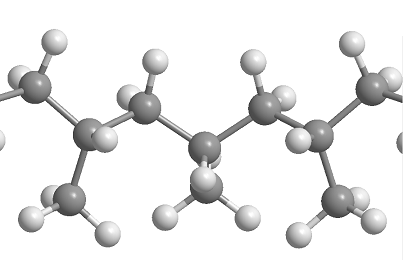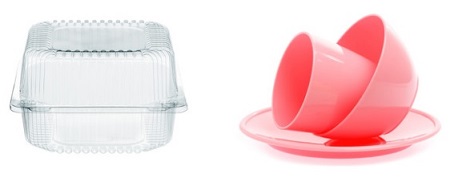Polyethylene thermoplastic resins include lowdensity polyethylenes (LDPE), linear low-density polyethylenes (LLDPE), high-density polyethylenes (HDPE), and ethylene copolymers, such as ethylene-vinyl acetate (EVA) and ethylene- ethyl acrylate (EEA), and ultrahighmolecular- weight polyethylenes (UHMWPE). The basic properties of polyethylenes can be modified with a broad range of fillers, reinforcements, and chemical modifiers, such as thermal stabilizers, colorants, flame retardants, and blowing agents. Major application areas for polyethylenes are packaging, industrial containers, automotive, materials handling, consumer products, medical products, wire and cable insulation, furniture, housewares, toys, and novelties.
LDPE, the first of the polyethylenes to be developed, has good toughness, flexibility, low-temperature impact resistance, clarity in film form, and relatively low heat resistance. Like the higher-density grades, LDPE has good resistance to chemical attack.
One of the fastest-growing plastics is linear LLDPE, used mainly in film applications but also suitable for injection, rotational, and blow molding. Properties of LLDPE are different from those of conventional LDPE and HDPE in that impact, tear, and heat-seal strengths and environmental stress-crack resistance of LLDPE are significantly higher. Major uses at present are grocery bags, industrial trash bags, liners, and heavy-duty shipping bags for such products as plastic resin pellets.
Rigidity and tensile strength of the HDPE resins are considerably higher than those properties in the low- and medium-density materials. Impact strength is slightly lower, as is to be expected in a stiffer material, but values are high, especially at low temperatures, compared with those of many other thermoplastics.
HDPE resins are available with broad, intermediate, and narrow molecular-weight distribution, which provides a selection to meet specific performance requirements. As with the other polyethylene grades, very-high-molecular- weight copolymers of HDPE resins are available with improved resistance to stress cracking.
Applications of HDPE range from film products to large, blow-molded industrial containers. The largest market area is in blowmolded containers for packaging milk, fruit juices, water, detergents, and household and industrial liquid products. Other major uses include high-quality, injection-molded housewares, industrial pails, food containers, and tote boxes; extruded water and gas-distribution pipe, and wire insulation; and structural-foam housings. HDPE resins are also used to rotationally mold large, complex-shaped products such as fuel tanks, trash containers, dump carts, pallets, agricultural tanks, highway barriers, and water and waste tanks for recreational vehicles.



